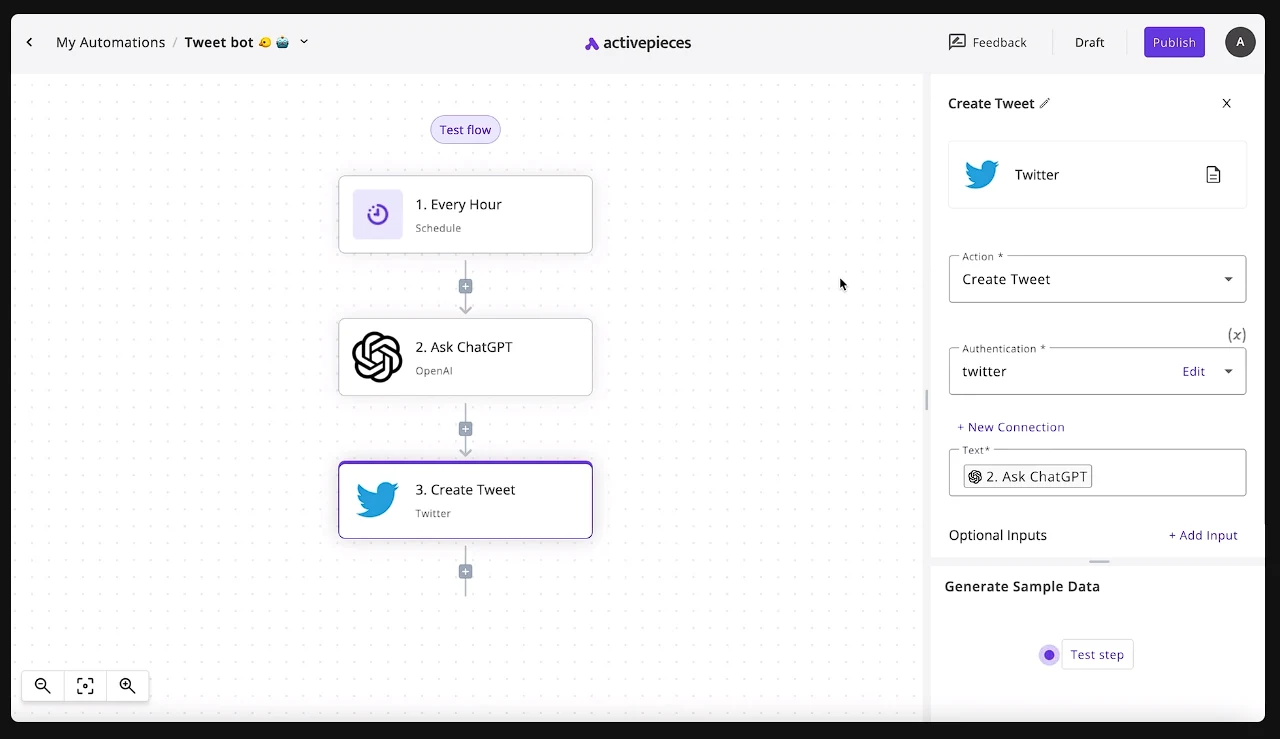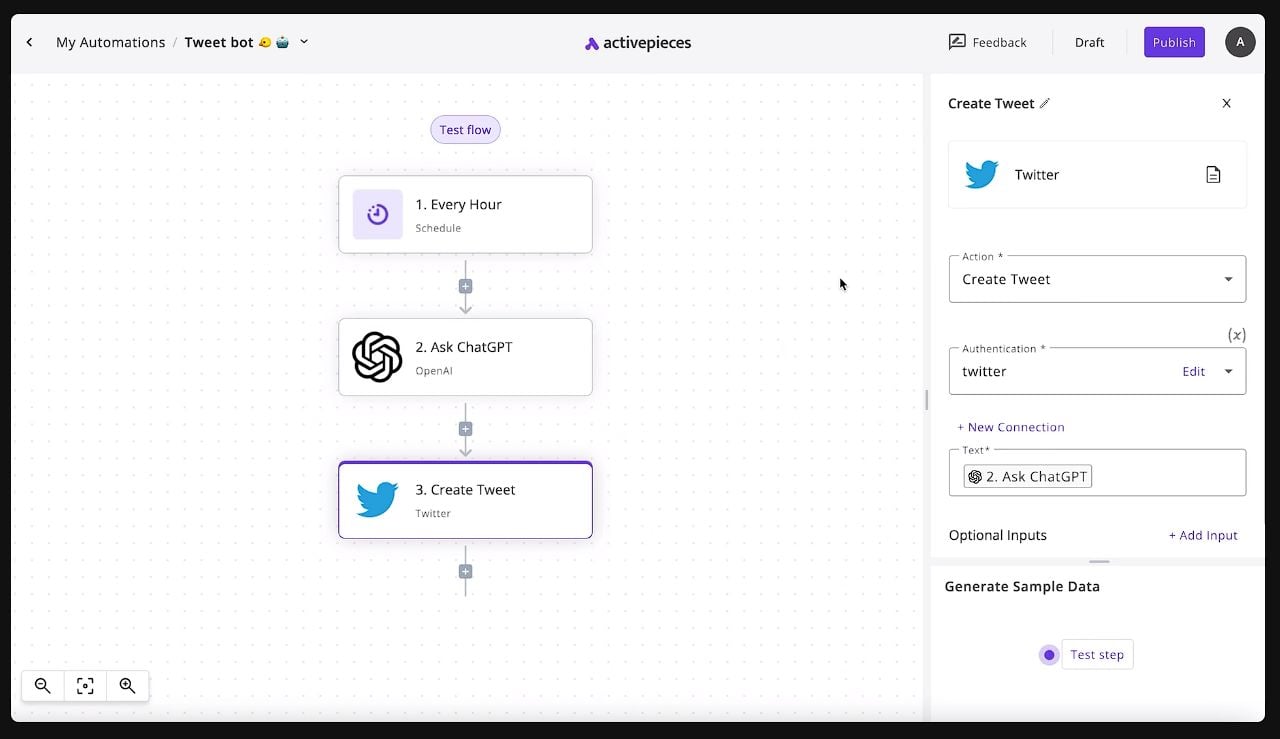
Activepieces is a new open source all-in-one automation tool, “designed to be extensible” say its developers providing users with an easy way to create their own powerful AI assistance using a TypeScript framework. At the heart of Activepieces is a drag-and-drop interface that’s incredibly user-friendly. This means that even if you’re not a tech wizard, you can still create complex workflows without needing to write a single line of code. The beauty of this system is that it allows you to visually piece together different components, making your operational sequence smooth and efficient.
One of the most exciting aspects of Activepieces is its open-source nature. This means that you have the freedom to dive into its TypeScript codebase and tweak it to your heart’s content. As your business evolves, you can add new features and services, ensuring that your automation tool grows with you.
But what really sets Activepieces apart is its ability to harness the power of artificial intelligence (AI). Imagine automating your social media posts or crafting customer service replies with the help of AI. This tool makes it possible, connecting with various language models and APIs to take on tasks that would otherwise require a lot of time and effort. A free package is available for up to 1,000 tasks per month.
Activepieces lets you build AI assistants easily
Activepieces doesn’t just stop at simple automation. It allows you to inject custom logic into your workflows. This means you can set up conditional statements and loops, creating dynamic processes that respond to real-time data. For those who need even more control, the platform supports HTTP requests and JavaScript, giving you the tools for more complex scripting.
Here are some other articles you may find of interest on the subject of building AI assistants :
A key feature of Activepieces is its focus on transparency and teamwork. With its detailed logging system, you can easily keep track of your automated workflows, making monitoring and debugging a breeze. Plus, its collaborative features mean that your team can work together on tasks, ensuring everyone is on the same page.
Benefits of using AI assistants for workflow automation
AI assistants can significantly enhance daily workflows through automation in several ways:
- Task Automation: They can automate routine tasks such as scheduling meetings, sending reminders, or managing emails. By handling these tasks, AI assistants free up time for more complex and creative work.
- Data Analysis and Reporting: AI assistants are adept at analyzing large datasets, identifying trends, and generating reports. This can be particularly useful in fields like finance, marketing, or research, where data-driven insights are key.
- Customer Service: In customer service, AI assistants can handle basic inquiries, provide instant responses, and route complex issues to human operators. This improves efficiency and customer satisfaction.
- Project Management: AI assistants can help track project progress, set deadlines, and notify team members of upcoming tasks or changes. This aids in keeping projects on schedule and teams aligned.
- Personalization: In marketing and sales, AI can automate and personalize customer interactions, from email marketing campaigns to product recommendations, enhancing customer engagement.
- Learning and Development: AI assistants can facilitate learning by offering personalized educational content, scheduling learning sessions, and providing feedback, making the process more efficient and tailored to individual needs.
- Health and Wellness: In personal wellness, AI can track health metrics, suggest workouts, remind medication schedules, and even provide mental health support, contributing to overall well-being.
- Accessibility: AI assists in making technology more accessible through features like voice-to-text, language translation, and personalized interface options, helping a wider range of users.
- Error Reduction: By automating tasks, AI can reduce human errors, especially in repetitive or detail-oriented tasks, leading to higher accuracy and reliability.
- Decision Support: AI can provide decision support by analyzing data and presenting possible outcomes or suggestions, aiding in more informed decision-making.
Cloud hosting
When it comes to hosting, Activepieces is flexible. Whether you prefer a cloud service with a set number of free tasks each month or a self-hosted solution that gives you full control, Activepieces has you covered. This flexibility ensures that you can choose the hosting option that best fits your needs.
Documentation
For those who need a helping hand, Activepieces offers extensive documentation to help you get up to speed quickly. It also provides tools for integrating with e-commerce platforms like Shopify and Stripe, making it a valuable asset for online businesses looking to streamline their operations.
Community
The community surrounding Activepieces is another standout feature. Once you create an account, you can start building your automated workflows right away. But you’re not alone; you can join the vibrant Discord community for support, follow “World of AI” on Twitter for the latest AI news, and subscribe to the YouTube channel for educational content.
Activepieces is more than just an automation tool; it’s a comprehensive solution that enhances your workflows with the power of AI. Its open-source framework and robust features make it an indispensable tool for anyone looking to automate their processes. Dive into Activepieces and experience the next level of workflow automation and learn more by visiting the official website.
Filed Under: Guides, Top News
Latest timeswonderful Deals
Disclosure: Some of our articles include affiliate links. If you buy something through one of these links, timeswonderful may earn an affiliate commission. Learn about our Disclosure Policy.





